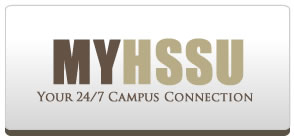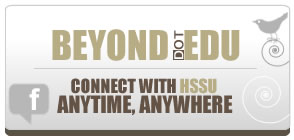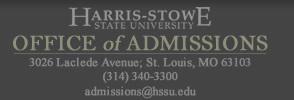Geo- Resolution 2024: Jazzmine Meekie
Harris-Stowe State University students participate in
NFTE/Maxar Innovation Day
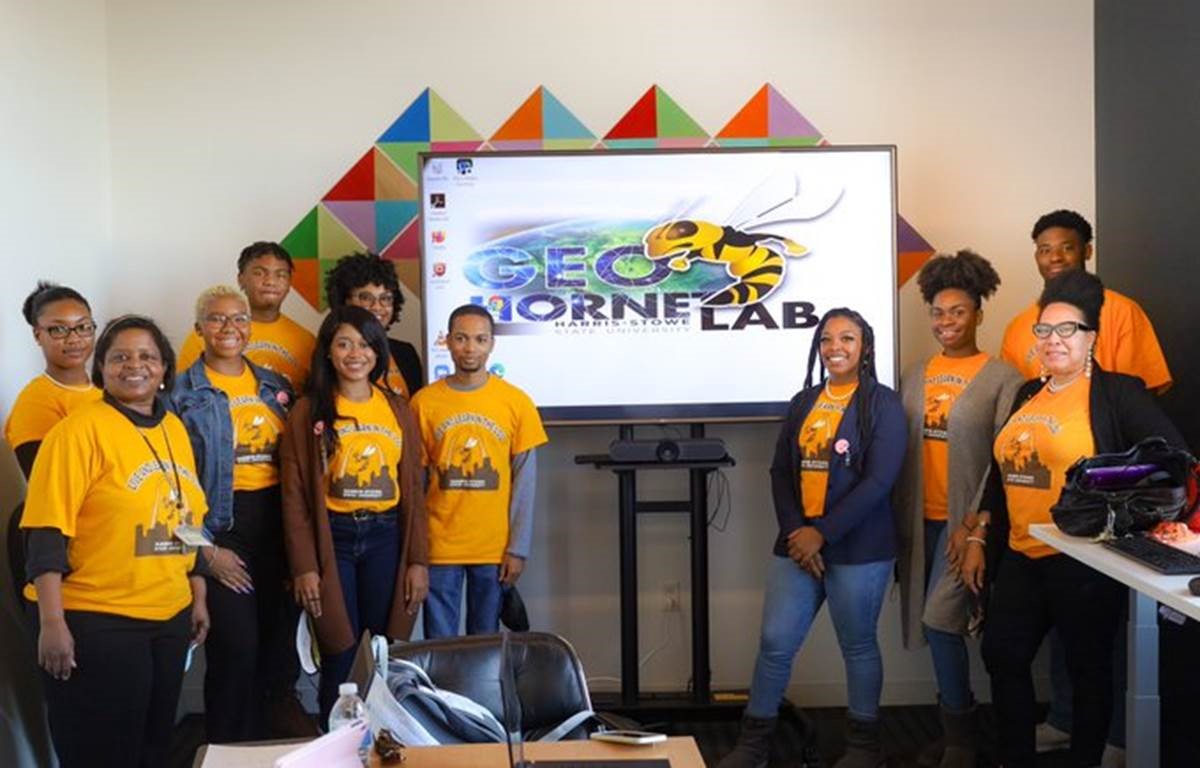
Three Harris-Stowe State University (HSSU) student research teams presented their respective geospatial data project designs at T-REX during the NFTE and Maxar Technologies Innovation Day on November 16, 2021. The interdisciplinary student researchers included biology, mathematics, sociology, political science, and information sciences and computer technology academic majors. The HSSU students’ participation in the event was a first for the university and was organized by both Dr. Freddie E. Wills, Vice President for STEM Initiatives and Research Partnerships, and Dr. Tommie Yvette Turner, Director of the Institute for Science and Mathematics.
The purpose of the event was to design solutions that addressed United Nation Sustainability Development Goals by using satellite imagery and other geospatial data. According to the IBM website, geospatial data is defined as, “information that describes objects, events or other features with a location on or near the surface of the earth.” In preparation for Innovation Day, the students learned that the geographic information system (GIS) can be utilized across a variety of topics to address equity issues, worked with HSSU faculty research advisors, and initially designed solutions that will help communities to become more inclusive, safe, resilient, and sustainable. The three HSSU student teams that participated in the event were the Lady Labsters, HSSU GIS Avengers of Social Justice, and GeoHornets Vegetation Alliance and their respective research projects varied in topics. During the event, each HSSU team was assigned to a Zoom breakout room where they received personalized coaching and advisement from NFTE and Maxar professionals on their respective projects.
Based on the feedback from each presentation, the HSSU teams will edit their project designs and will submit their final solutions to the NFTE and Maxar Innovation Challenge Committee by December 15, 2021. All submissions will be judged in January, 2022 for consideration to be chosen as a team finalist. The top ten team finalists will submit a pitch video of their solutions. The winning team will be announced in March, 2022 and receive prize money.
Members of The Lady Labster team are Allison Henry (team lead), Junoria Worthy, Camara Macon, Inaya Smith, Iyana Oliviel and Dr. Carmel Martin-Fairey serves as the HSSU faculty research advisor. Their proposed research idea will investigate light pollution as a threat to biodiversity. This team proposes using GIS to literally map on the global perspectives of the deleterious effects of light pollution as reported by epidemiological health data, social economic data and specifically rates of poor maternal-fetal health outcomes in areas of extreme to negligible light pollution.
Henry reflected on her participation in the Innovation Day event and said, “As an honors biology major, I learned that using GIS in our project could help improve the lives of a mom and her child. GIS is important because it is a global tool that can be used to protect the underrepresented and the environment. We are using it to locate extreme light-polluted areas and discover intersections with maternal health disparities.”
The HSSU GIS Avengers of Social Justice members are Kiara Franklin (team lead), Uche Agali, and Dr. Candice Idlebird serves as the HSSU faculty research advisor. Their proposed research idea will investigate the differences in emergency service response time in impoverished communities versus more affluent neighborhoods in the city of St. Louis. The HSSU GIS Avengers of Social Justice team will be able to create a map from the collected data to find points where sub-stations are currently located to guide them to finding solutions on adding substations.
“Our research project is impacted by GIS because the program will allow the team to review data to pin point crime mapping in Fairground Park neighborhood compared to Lafayette Square neighborhood, Dr. Idlebird said. “The students will look at the crime types, locations, emergency calls, and non-emergency calls for each neighborhood. With the assistance of GIS, we will look into the human landscape maps, wealthy and poverty levels, statistical analysis: hot spots, and finally the cost service analysis: the path of least resistance to find out where the high traffic areas are located to determine the site selection for additional sub stations.”
Franklin reflected on her participation in the Innovation Day event. “As a sociology major, I was not sure if I would be able to make connections between GIS and sociology, but to my surprise, I was wrong,” Franklin said. “GIS is a great tool that can be used to enhance any form of sociological research. I learned that GIS is more than just using tools to map out locations or events. It is also a great tool to help you address and analyze sociological and economic problems that communities are plagued with globally.”
Finally, the GeoHornets Vegetation Alliance members are Khair Bonsana (team lead), Christian Blue, Aliyah Fleeks, KeShaun Childress, Michael Love, Dr. Gary Higgs, Dr. Sudarsan Kant, and Dr. Andre Smith serves as the HSSU faculty research advisors. Their proposed research idea stemmed from a recent New York Times article that showed a correlation between tree discrepancies in Black and Brown neighborhoods with lower median salaries compared to more affluent neighborhoods. The students will replicate the article utilizing GIS mapping to compare the amount of tree canopy, crown density and vegetation in the six neighborhoods (St. Louis Place, JeffVanderLou, Carr Square, Columbus Square, Old North St. Louis and Hyde Park) surrounding the new National Geospatial-Intelligence Agency (NGA) West site compared to other neighborhoods in metropolitan St. Louis. The students will also use their project results to provide recommendations to the St. Louis Mayor’s Office on the amount and variety of trees plus funding that will benefit the equitable planning and development in these six neighborhoods.
Bonsana reflected on his participation and what he learned throughout their preparation for the Innovation Day event. “In contributing to my group project designed to tackle a problem facing the community, I learned how GIS helps in organizing potential solutions,” Bonsana said. “Through my experience in working with GIS, I believe it has potential to solve many problems ranging from social, environmental, and political areas.”
Dr. Turner expressed how proud she was of the students who participated. “Way to go Hornets, keep stinging, and your different research projects using satellite imagery and other geospatial data will impact society,” she said.
Congratulations and good luck to the HSSU teams competing in the NFTE/MAXAR innovation challenge at T-Rex today, November 16, 2021. Students designed projects using geospatial data to make communities inclusive, safe, sustainable, and resilient.

The 2021 NSF Undergraduate Research Symposium
Will Take Place Virtually April 30, 12 p.m. – 5 p.m.
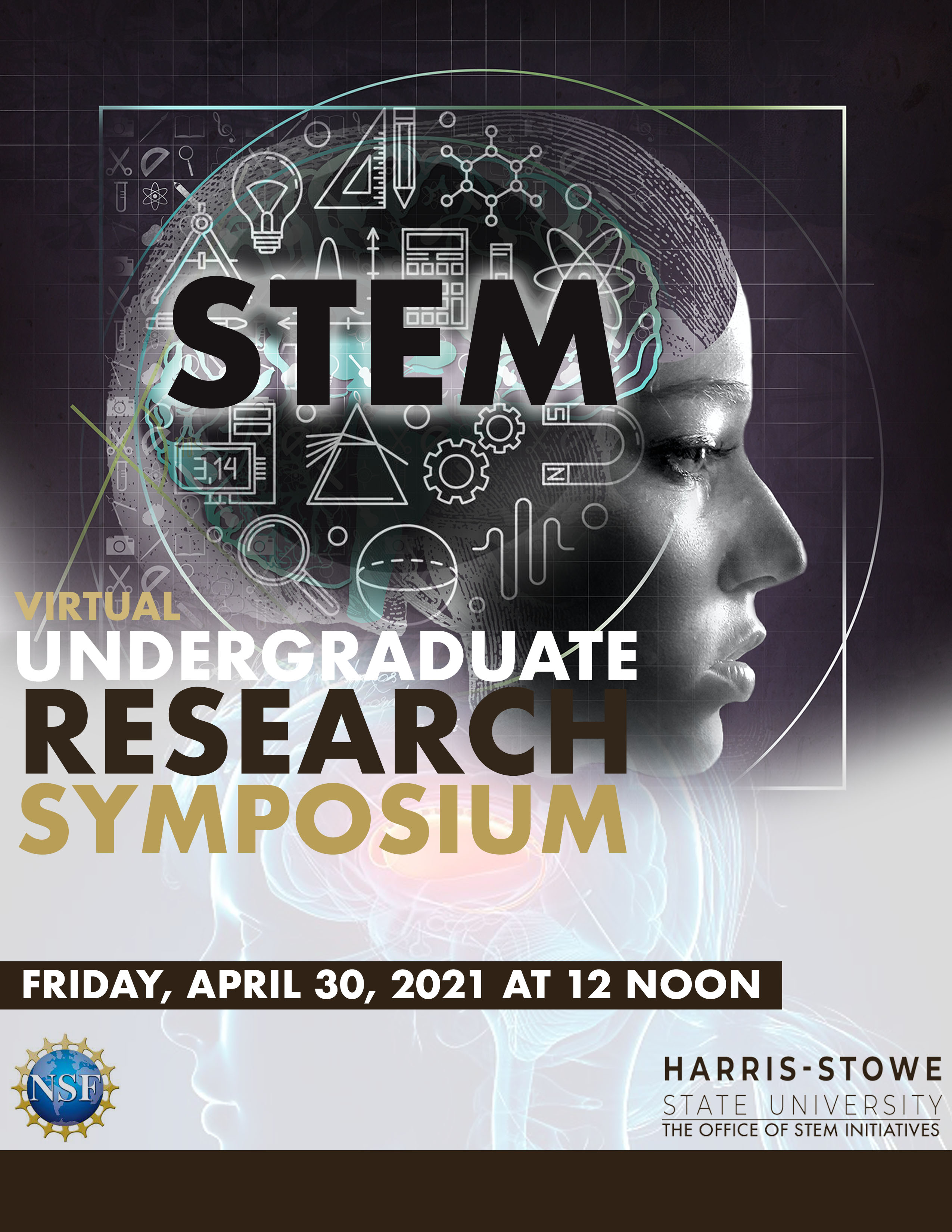
By Malena Amusa
The 2021 National Science Foundation (NSF) Undergraduate Research Symposium at Harris Stowe State University (HSSU) is an opportunity for undergraduates to present their scholarly research to faculty and their peers across the campus.
It is also a forum where student researchers can confidently answer questions about their research and further prepare themselves for post graduate pursuits.
This year’s symposium will feature a record number of HSSU students - a total of 19 presenters - and will take place over Zoom on Friday, April 30, 12 p.m. to 5 p.m.
The increased number of student researchers at Harris-Stowe is the direct result of expanded National Science Foundation grant funding and an increased focus on STEM at the University and nationally.
Dr. Tommie Yvette Turner, Director of the Institute for Science and Mathematics hosting the symposium, said “Our STEM students have worked diligently over the past several months with Harris-Stowe faculty to investigate societal questions, to think critically, and to seek solutions to various issues.”
“Without a doubt, the STEM students who have participated in the undergraduate research program have enhanced their academic foundation while matriculating at HSSU,” Turner added.
Dr. Freddie E. Wills, Jr., Assistant Vice President of STEM Initiatives and Principal Investigator of Missouri Louis Stokes Alliance for Minority Participation (MOLSAMP), expressed his excitement about the symposium and pride in the student scholars.
“I am excited about the Undergraduate Research Symposium as it provides an excellent opportunity for our students to display their research skills while presenting discoveries they made under the guidance of HSSU faculty and others who have supported their work,” Wills said. “Dr. Turner has done a wonderful job to provide a platform for our students and faculty to share their efforts with the campus community. As the University is set to make a transition to a Statewide Mission in STEM, we look to deepen and strengthen our undergraduate research agenda. I am proud of the work produced by our students.”
Last year, a few of the freshman researchers comprised the inaugural cohort of HSSU scholars to participate in the iResearch Institute, a premier summer research program based in New York that prepares early college and high school students for the rigors of advanced research.
Ryan Jones, a Freshman Information Science and Computer Technology major, participated in the virtual iResearch program and went on to investigate the reproductive biology of a passionflower vine, under the advisement of Dr. John MacDougal.
“In the iResearch Institute, I learned the necessary research methods and investigation skills required to effectively conduct original, scientific research projects,” said Jones who wants to become an information technology executive. “I learned proper data analysis and how to utilize coding programs to aid with this, which immensely prepared me for my research in my freshman year. It gave me experience that I could use to continue making my contributions greater.”
Cameron Lowery, a Freshman Biology/Pre-med major, will be presenting her research on the effect of premature birth on various childhood ailments and potential outcomes, which she conducted under the advisement of Dr. Theresa Okeyo-Owuor. Lowery first began adapting advanced research techniques in the iResearch program, including using code to correlate her findings. During her freshman year, she has enhanced her critical thinking skills while working closely with her advisor.
“You learn so many transferable skills during your undergraduate career that you can apply to post-graduate programs such as Ph.D. programs or even medical school,” said Lowery who aspires to become a pediatrician. “Undergraduate research allows you to contribute knowledge and broaden what we know about the world at such a young age. I would encourage all students to participate in any given research opportunity while they're in college.”
At the symposium April 30, each student will have 10 minutes to present their work, followed by a five-minute Q&A. They will upload their poster presentation or PowerPoint then discuss their research all via Zoom.
“I plan on my PowerPoint being simple and consistent because I want to be engaged with my audience and for them to listen to important information that I have to say, rather than reading my slides,” said Jones as he eagerly prepares for the symposium.
All HSSU students, faculty and staff are invited to view the symposium and participate in the Q&A.
“Scientists are expected to present their research to peers and the scientific community,” Dr. Turner said. “This 2021 National Science Foundation (NSF) Undergraduate Research Symposium will prepare our STEM students for future presentations at national scientific conferences and other forums.”
Review the program booklet to learn more about the HSSU students' research projects
https://www.flipsnack.com/hssustem/nsf-undergraduate-research-symposium-program-2.html
A HSSU Student Takes First Place at 2020 ERN Conference

A Harris-Stowe State University senior studying biology won first place in the Ecology category for his undergraduate oral presentation at the ERN Conference in Washington D.C. on Sunday.
Derek McFarland, 23, a National Institute of Health-National Institute of Diabetes and Digestive and Kidney Diseases STEP-UP fellow was one of 22 Harris-Stowe students who attended the ERN Conference.
The National Institute of Diabetes and Digestive and Kidney Diseases (NIDDK) is part of the National Institutes of Health (NIH), the nation’s medical research agency.
“Last summer, I collected ticks at the Tyson Research Center as a part of the Adalsteinsson Ecology Lab and Boon Lab,” McFarland said. “The purpose of my research was to determine the prevalence of Bourbon virus, a recently emerging pathogen first discovered in Bourbon County, Kansas.”
The most recent case was in 2017, where a Missouri woman contracted Bourbon virus and died of her critical symptoms, according to KSDK.
“I am currently conducting research in the Boon lab using ‘wet lab assays’ to search for the presence of the virus in the ticks,” McFarland said. “My research stipend is supported by the Missouri Louis Stokes Alliance for Minority Participation (MOLSAMP).”
McFarland credits his first place victory to his research advisers, Dr. Adrianus Boon and Dr. Solny Adalsteinsson.
“We are so proud of Derek for this win; he has worked hard and clearly excelled at both his research and his ability to communicate it,” Adalsteinsson said.
According to Adalsteinsson, Derek possesses an unbridled enthusiasm for research and the natural world.
“A natural leader by example, he sets the tone for the rest of the students in the lab with his positivity and keen sense of humor, and he patiently helps train younger students,” Adalsteinsson said.
Along with his advisers, Dr. Tommie Y. Turner, Director of the Institute for Science and Mathematics who coordinates the annual ERN conference trip, congratulated McFarland on his accomplishment.
“I am extremely proud of Derek’s research accomplishments as an emerging scientist,” Turner said. “He’s definitely ready for graduate school to continue on his academic trajectory to obtain his doctoral degree and eventually establish his own research lab.”
HSSU STEM Students to Attend 2020 ERN Conference in Washington, DC

Harris-Stowe State University undergraduate researchers, faculty and professional staff at the 2020 Emerging Researchers National (ERN) Conference in Washington, DC, hosted by the American Association for the Advancement of Science and the National Science Foundation.
Twenty-two Harris-Stowe State University students will attend the Emerging Researchers National (ERN) Conference in Science, Technology, Engineering and Mathematics (STEM) in Washington, D.C., on February 6-8.
For their tenth anniversary, the theme of this year’s conference is “Preparing Diverse Researchers to Address Global Challenges” as the American Association for the Advancement of Science (AAAS) reflects on the impact of the ERN Conference over the years.
The conference focuses on college and university undergraduate and graduate students who participate in programs funded by the National Science Foundation Division of Human Resource Development, including underrepresented minorities and persons with disabilities.
On January 31 in the HGA Building, Dr. Tommie Y. Turner, Director of the Institute for Sciences and Mathematics, held a student mock practice session for the 10 students who will be sharing their research and competing at the national conference.
“The purpose of holding a mock practice for Harris-Stowe students was to prepare them for the national competition at the ERN Conference,” Turner said. “Various judges will evaluate the students’ posters or oral presentations.”
In addition to Harris-Stowe students, other students from around the country will give poster and oral presentations during the conference.
“For oral presentations, students are given no more than 10 minutes to present their research findings, which is followed by a 5-minute question and answer period,” Turner said. “For poster presentations, students are assigned a certain day and time frame to present their research. Additionally, conference attendees who want to observe any of the presentations can do so.”
The objectives of the conference are to help undergraduate and graduate students enhance their science communication skills and better understand how to prepare for science careers in a global workforce.
Lois Morrow, a Harris-Stowe senior studying biology, will attend the ERN Conference for the first time this year.
“The first time I heard about the ERN conference was through my peers,” Morrow said. “They spoke very highly of the ERN conference and talked about how much of an honor it is to be chosen to compete in the poster sessions.”
According to Morrow, Dr. Tommie Y. Turner encouraged her to participate in the ERN Conference.
“The ERN conference will not only help me to better my career in science, but it will also enhance my chances to network with some of the leading organizations in STEM,” Morrow said.
2019 Undergraduate HSSU Scholars Present Their Findings at the Second Annual Interdisciplinary Research Symposium

The second annual Interdisciplinary Undergraduate Research Symposium was on Friday, September 13, at the William Clay Sr. Parenting Education Center and Early Childhood Education Building.
Dr. Tommie Turner, Director of the Institute for Science and Mathematics said, “These students worked diligently with their respective Harris-Stowe faculty research advisors to investigate societal questions, seek solutions to various issues and prepare themselves for post-graduate pursuits.”
The symposium is an opportunity for HSSU scholars to present their research to the community and answer questions about their findings.
“After participating in the Interdisciplinary Undergraduate Research Symposium, I believe that these student researchers have enhanced their academic foundation while matriculating at Harris-Stowe,” Turner said.
In a letter written to the student researchers, Interim President Dr. Dwayne Smith said he was incredibly proud of the work HSSU students presented at the conference.
“Research is at the forefront of our institution’s mission to promote scholarship and academic endeavors among our scholars,” Smith said.
Dr. Alonzo DeCarlo, Interim Associate Provost of Academic Affairs, also supports HSSU students in their research roles.
“For future employers and graduate schools, this opportunity allows our students to exhibit a distinctive and valuable level of academic engagement and ingenuity,” Decarlo said.
The purpose of the symposium was to provide an academic forum for student researchers from the Anheuser-Busch School of Business, College of Arts and Sciences and the College of Education to present their scholarly research to the campus community.
Yuliana Noyola Miranda, student researcher from the Anheuser-Busch School of Business, focused her research on cybersecurity strategies, under the advisement of Dr. Robert Kamkwalala.
“Diagnosis of Time Based Model of Security on Value of Information: A Qualitative Approach to Information Technology Spending and Risk Analysis,” is the title of Noyola’s research she presented at the symposium. The goal of her research was to understand cybersecurity risk metrics to implement better security strategies.
“I intend to own a business in the future,” Noyola said. “It was clear that a double major in business administration and accounting would provide me with the knowledge and skills to achieve my goal.”
Noyola is interested in gaining her education and pursuing a career in business because it will also be beneficial in helping her family’s business.
“It would mostly allow me to help my parents improve and expand our family business,” Noyola said. “This way I can contribute in some way for all the support and love they have given me throughout my life.”
Noyola plans to enhance her accounting skills to impact minority communities and their understanding of resource allocations.
“I am an international student whose first language is Spanish,” Noyola said. “I have experienced the lack of assistance with different laws and regulations.”
Noyola said she believes her accounting degree will allow her to reach minorities who experience these problems and orient them towards making the right decision about their resources.
Rachel Taylor-Huang, a student researcher in the College of Arts and Sciences, majoring in psychology, says she switched her major because of the many opportunities that stem from this degree field.
The title of Taylor-Huang’s research is, “Privacy Technology and the New Digital Divide,” which she completed with Dr. Reynaldo Anderson. The research explores various technologies developed throughout the years in addition to how race plays a factor in creating the new digital divide.
“During my first year in college, I took Dr. Anderson’s courses,” Taylor-Huang said. “He pioneered Afrofuturism 2.0.”
Researchers completed previous research on Afrofuturism in the Web 1.0 era, based on the Clearnet, which is the openly accessible internet typically everyone uses.
“Afrofuturism was a topic of discussion with Dr. Anderson, when I first met him,” Taylor-Huang said. “I dived into this research; it has been fun ever since.”
Taylor-Huang said she plans to complete her graduate studies in Japan while working as an English teacher after she graduates from HSSU.
Tremont Davis, another student researcher studying psychology, completed his research with Dr. Amy Ruffus-Door in the College of Education. Davis studied the barriers between African American males and the education field.
“Before I decided on psychology, I chose education for my major and I played football,” Davis. “I took some time off from school.”
Davis said during that time, he reflected on how valuable getting an education is and decided to return.
“I looked into majoring in psychology,” Davis said. “It is a versatile major and you can do a lot with it. I saw it was a newly offered degree program at HSSU.”
“Seen but unheard? Exploring the educational experience of African American males – A qualitative investigation,” is the title of Davis’ research project. This exploratory case study examined the impact of students coming from families who did not prepare them to be academically successful at the college level through in-depth interviews.
“I wanted to complete a research project relevant to me,” Davis said. Davis said he wanted his research to be something he could connect to as well as those around him. “I identify with being a black male in class in addition to the adversities that come along with it,” Davis said. “I also know many people who have struggled with the same things I do.”
Davis said he plans to go to graduate school after completing his undergraduate degree at HSSU.
To learn more about the HSSU students' research projects, review the program booklet https://www.flipsnack.com/hssustem/fall-2019-interdisciplinary-undergraduate-research-symposium-930.html
2 HSSU students awarded St. Louis American Foundation Better World Scholarships


Two Harris-Stowe State University students received Better World Scholarships, amounting to $3,500 each, through the St. Louis American Foundation on September 16.
Jordan Barrett-Elder and Reid Chunn are two seniors on dual-enrollment tracks for the mechanical engineering degree plan between HSSU and Saint Louis University (SLU).
“I feel fortunate to receive this scholarship,” Barrett-Elder said. “Dr. Turner contacted me about this opportunity.”
Dr. Tommie Yvette Turner is the director of the Institute for Science and Mathematics. She ensures that HSSU students are supported through effective preparation and opportunities in mathematics and science.
“After a few review sessions and pep talks, she helped me put my best foot forward in the application process,” Barrett-Elder said.
The mechanical engineering degree plan includes a dual-enrollment partnership between HSSU and SLU. Students on this degree track pursue a bachelorof mathematics degree at HSSU and a bachelor of science in mechanical engineering degree at SLU over the duration of six years. Barrett-Elder spoke about how the scholarship will ease the financial burden of his degree plan and aid in his future aspirations.
“The cost of my degree program between HSSU and SLU is pretty expensive so this will help with my college education,” Barrett-Elder said. “Once I graduate, I will become a mechanical engineer and would like to work for an aerospace company.”
Barrett-Elder went on to talk about how he would also like to to give back to his high school in the future.
“I would like to stay in St. Louis to be close to home because I want to eventually become a math teacher at my old high school, Jennings Sr. High School,” Barrett-Elder said.
Chunn talked about how thankful he was for receiving this award.
“Among the many trials 2020 has presented, it’s amazing that I continue to be blessed and I’m thankful for this opportunity,” Chunn said.
When asked what his future aspirations are, Chunn talked about how he would like to pursue a rewarding career in his degree field.
“I would like to work as a mechanical engineer specializing in transportation efficiency, then retire and become math teacher,” Chunn said.
Chunn went on to say he would also like to become a math teacher to show the younger generation how useful math is in addition to providing representation as an African American male teacher in the classroom.
“There isn’t a large representation of African Americans in the education system; black males who are math teachers are practically unheard of,” Chunn said. “I can show students the practical side of what math can be used for.”
The St. Louis American Foundation is the 501(c)3 nonprofit arm of The St. Louis American newspaper. To date, The St. Louis American Foundation, along with its education partners, has fostered more than $5 million in scholarships for high-potential, local minority students, as well as community grants.
Harris-Stowe State University Student Receives First Place Honors at 2018 Emerging Researchers National (ERN) Conference in Washington, DC

Mayla Ayers, a junior sustainability and urban ecology major at Harris-Stowe State University, received undergraduate oral presentation first place honors in the Ecology, Environmental and Earth Sciences category at the 2018 Emerging Researchers National (ERN) Conference. The event was held in Washington, DC, February 22-25, 2018. Ayers’ presentation was entitled “PCH1 Regulates Thermoresponsive Growth in Arabidopsis thaliana” and she completed her summer research under the advisement of Dr. He Huang and Dr. Dmitri A. Nusinow as part of a National Science Foundation (NSF) funded “REU Site: Research Experiences in Plant Science at the Donald Danforth Plant Science Center.” Research in the Nusinow laboratory and the NSFREU Site under the direction of Dr. Sona Pandey, Dr. Christopher Topp, and Catherine Kromer are supported by NSF grants IOS-1456796 and DBI-1659812, respectively. The Danforth Plant Science Center’s REU summer internship program is held eleven weeks each summer and exposes students to a rich research environment. The program gives students experience with all aspects of modern scientific research, from design to experimentation to reporting. Faculty mentors and staff provide insight into the personal qualities that make a good researcher, the process and training involved in becoming a scientist, and the broader impact of scientific discovery.

